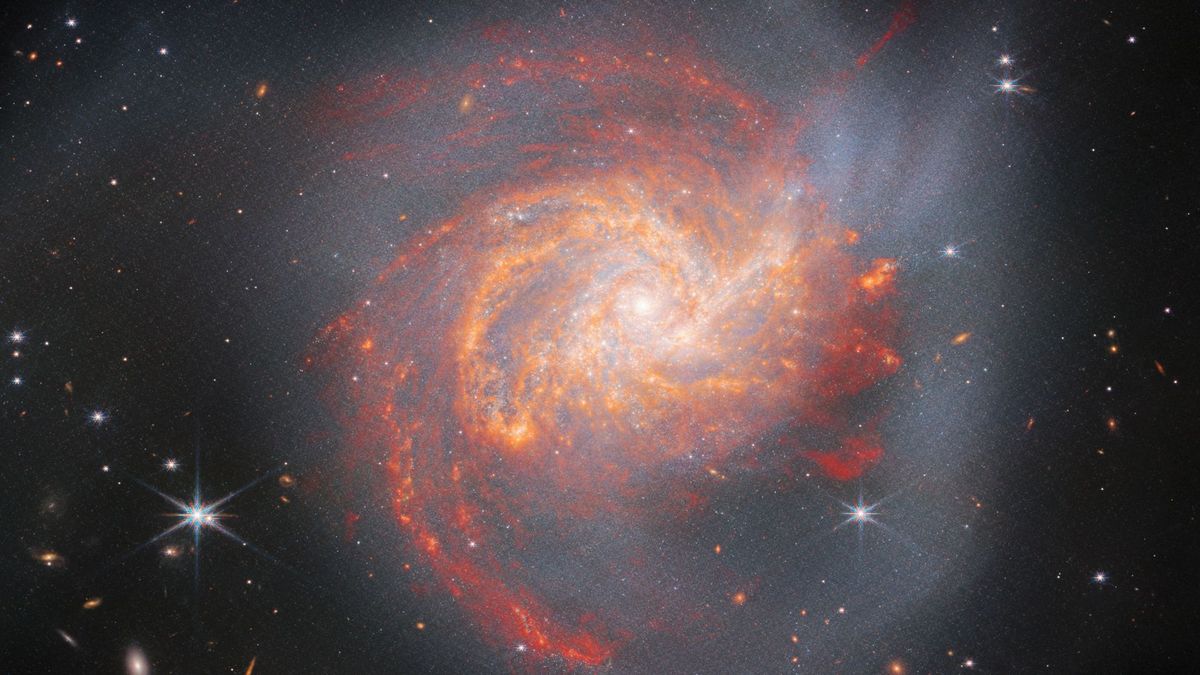
A new image from the James Webb Space Telescope (JWST) shows that when it comes to galaxies, appearances can be deceiving.
The image shows a calm-looking orange-red galaxy, but this cosmic spiral of gas, dust, and stars hides a violent past that is the wreckage of a massive collision between two former galaxies that took place some 500 million years ago.
The galaxy in question is NGC 3256, which is located about 120 million light-years from Earth and is a member of the Hydra-Centaurus Supercluster. Hints of this swirling galaxy’s chaotic past are hidden within the James Webb Space Telescope image in the form of long globs of dust and bright stars that extend outward from the galaxy’s main body and brighter parts of NGC 3256.
Studying these cosmic collisions can teach astronomers a lot about how galaxies like our own, the Milky Way, grow by merging with other galaxies. As this galactic growth leads to the merger and growth of black holes, studying debris such as NGC 3256 could also help solve the mystery of how the supermassive black holes at the cores of most galaxies can grow to masses millions or even billions of times that. from the sun.
Related: Saturn’s rings look great in this first James Webb Telescope image of the gas giant
The historic merger that created NGC 3256 was also responsible for an intense burst of star formation in the galaxy. This happens because when galaxies collide, they funnel gas and dust together into dense clouds to become the raw material for star birth.
Young star formation can be seen as the brighter regions within the orange/red glow of NGC 3256. These stars belch infrared light, emitting tiny grains of dust that make the galaxy glow so brightly and render it perfect. The target for JWST, designed to see the universe in infrared.
When galaxies collide, most stellar objects escape violent collisions unscathed, in contrast to the gas and dust content of those galaxies. This is due to the large voids between the stars. But this is not the case for all stars in those galaxies. JWST’s image of NGC 3256 shows filaments of stars that have been ripped from their parent galaxies as a result of gravitational interactions between colliding galaxies creating incredible tidal forces.
The stunning image of this galaxy was created by JWST using data from the Near Infrared Camera (NIRCam) and the Medium Infrared Instrument (MIRI). Visualizing NGC 3256 in this way demonstrates the usefulness of the JWST telescope, the most powerful telescope ever placed in Earth orbit, in understanding the growth of galaxies and the evolution of the universe.
Join our space forums To continue talking about the latest missions, the night sky and more! And if you have a tip, correction or comment, let us know at: [email protected].




More Stories
Boeing May Not Be Able to Operate Starliner Before Space Station Is Destroyed
Prehistoric sea cow eaten by crocodile and shark, fossils say
UNC student to become youngest woman to cross space on Blue Origin